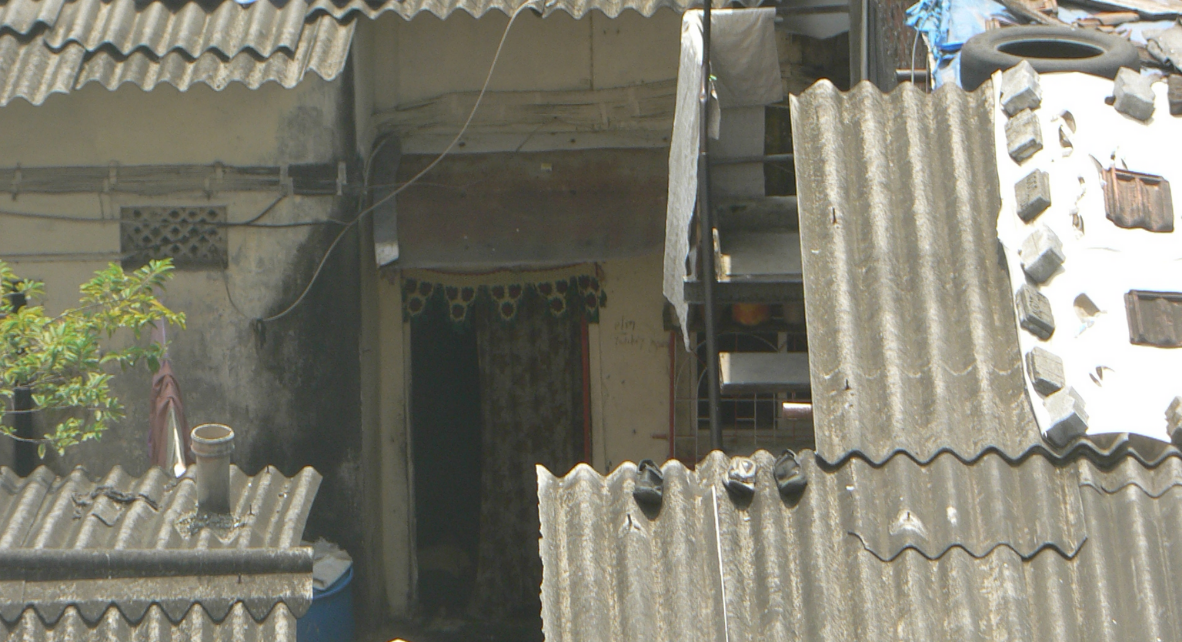1. Not the formal world's mental image
The developed-world conception of slums is of previously formal housing, often built or operated by the government, which has become a vertical rabbit warren of the underclass. Emerging-world slums are completely different: never formal, usually self-built, organized not by formal society but by informal residents themselves.
| Developed world | Emerging world |
| 1. Originally formal, now grown informal | 1. Originally informal, striving to formalize |
| 2. Government sponsored and subsidized | 2. Pure private, suspicious of government |
| 3. Governed top-down | 3. Governed bottom-up |
2. Highly dense, low-rise, substandard, and unhealthy
Emerging-world slums pack an enormous number of people into a very small land area. Nairobi's Kibera vies with now-demolished Kowloon Walled City and New York's 1895 Lower East Side for the highest-density habitation ever experienced on earth.

Welcome to the informal and formalizing world
3. A dangerous place to live
Slums are dangerous places to live and work. Unpaved roads and open sewers invite or cause accidents. Injuries are common and often go untreated, because to be injured is to be unable to earn even a meager living.
4. A self-built spontaneous community
Emerging-world slums are self-built. People immigrate to the city in search of a better life – and they are right to do so, because for all its faults, the city offers them better income prospects and education for their children. Upon arrival, immigrants find too little housing to accommodate them, so they build their own, applying their own skills on found or scavenged materials.
5. Where private investment has outrun public infrastructure
At the beginning, most slums are consciously ignored by the formal city. ("Maybe they'll go away.") The slum dwellers settle on land that is available to them – usually poor quality, sloping, flood-prone, or downwind of the paper mill.
6. A wealth-extraction machine
Slums extract wealth from their slum dwellers: it costs money to sleep on the pavements of Delhi or Mumbai. Wealth leaches out in protection, in bakshish to public officials to look the other way, in rent paid to absentee landlords (or their intermediary rent collectors), and in high unit costs for basics like poor-quality water or sanitation. These costs are priced and consumed at people's subsistence level, because it's expensive to be poor.
7. Where physical reality and legal documentation are wildly at odds
Kibera, the largest slum in Africa, is not shown on the map of Nairobi, which instead lists the area as a lake abutting the Nairobi Dam. The formal cadaster never reflects the physical reality of slums. This contributes to a cognitive dissonance: we cannot acknowledge the slum's existence, yet every bit of its existence proves the invalidity of our laws.8. Alternative-universe power structure
The order that emerges inside a spontaneous and self-built community is purely internalized; the outside law has little meaning, because the law seldom enters the slum. Power may flow through organized crime, gangs, or tribal, ethnic or language groups. It may cluster around synagogues, churches or mosques; or it may be built from employment guilds or savings cooperatives. Everyone in the slum knows its power structure and treats it with deference – or else.9. Hives of entrepreneurs
Slums are never silent … because they are never at rest. They have barbershops, bakeries, movie theaters, furniture makers, materials resellers, DVD repairmen, shoemakers, vegetable sellers, and seamstresses. Slums are the empire of informal and home-based workers, and the fastest incubators of business innovation I've ever seen. Slums are where informal jobs in the wider city go to sleep at night.10. A self-organizing ecosystem
Slums become self-organized and self-repairing ecosystems. They evolve and adapt with extraordinary speed, and because they are comprised of thousands of people who become expert at maximizing output from scant resources, slums are amazingly smart and resilient.
11. 'Economically rational' delivery of 'affordable housing'
Slums are thus a perfect expression of market forces at work: they are the adaptive response to rapid urbanization, producing economically rational affordable housing – minimum-quality dwellings paid for by the city's poorest people. All of slums' negative externalities – density, lack of hygiene, danger, alternative-power universes – are consequences of the relentless application of pure-market principles to the problem of rapid urbanization.
12. A phase every rapidly urbanizing city goes through
Every rapidly urbanizing city – including Augustus Caesar's Rome, 1780s London, or 1880s New York – goes through a period of slum proliferation because people are coming to the city much faster than the city's physical infrastructure and democratic governance can keep up. They appear in a rapidly changing city, and their emergence likewise changes that city.


